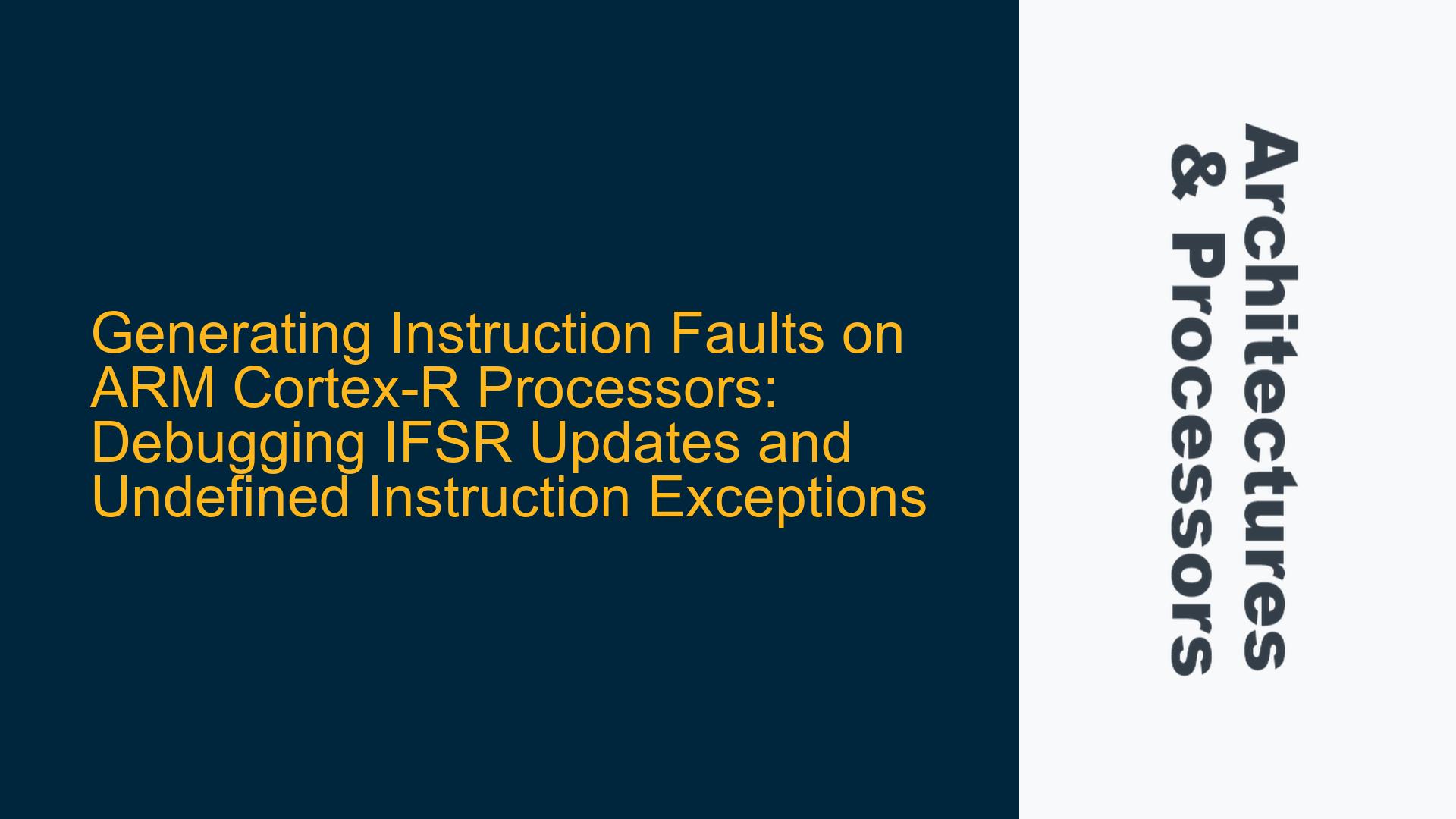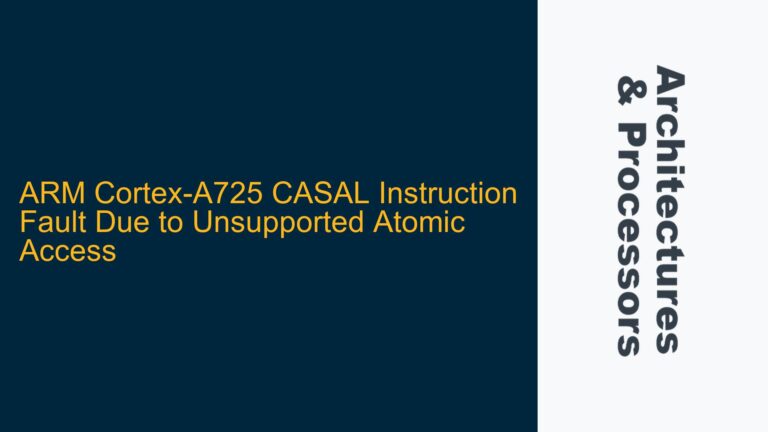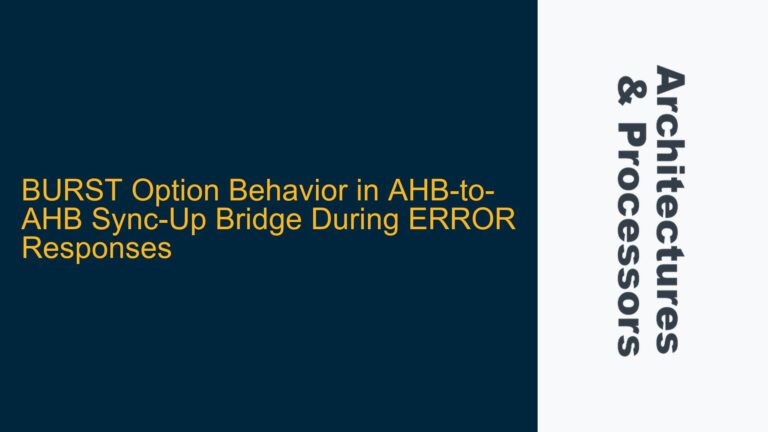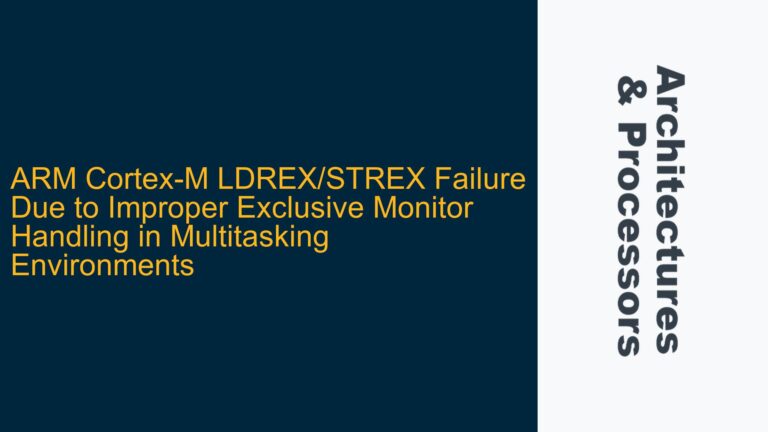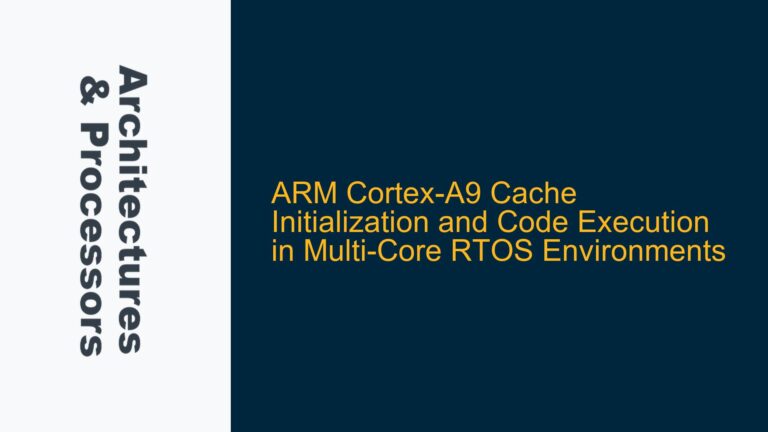ARM Cortex-R Instruction Fault Generation and IFSR Behavior
The ARM Cortex-R series of processors is designed for real-time applications, offering high performance and reliability. However, debugging instruction faults and understanding the behavior of the Instruction Fault Status Register (IFSR) can be challenging, especially when attempting to generate faults intentionally for testing purposes. A common issue arises when developers try to force instruction faults by writing invalid instructions to memory and executing them, only to find that the IFSR does not update as expected. This behavior is often misunderstood, as the IFSR is specifically designed to capture prefetch abort conditions rather than undefined instruction exceptions.
When an undefined instruction is executed, the ARM Cortex-R processor triggers an undefined instruction exception, but this does not result in an update to the IFSR. The IFSR is primarily used to record details about prefetch aborts, which occur when the processor attempts to fetch an instruction from a memory location that is inaccessible or improperly configured. This distinction is critical for developers who are trying to debug or test fault handling mechanisms, as it requires a clear understanding of the differences between undefined instructions, data aborts, and prefetch aborts.
In the provided scenario, the developer attempted to generate an instruction fault by writing an invalid instruction (0xFFFFFFFF) to a memory location (0x100) and then executing it. However, this approach did not result in an IFSR update because the processor treated the invalid instruction as an undefined instruction rather than a prefetch abort. To properly generate an instruction fault that updates the IFSR, the developer must create conditions that trigger a prefetch abort, such as accessing a memory region with "No Execute" permissions or attempting to execute code from an invalid address.
Undefined Instruction Exceptions vs. Prefetch Aborts: Key Differences and Causes
The ARM Cortex-R architecture distinguishes between undefined instruction exceptions and prefetch aborts, each with its own set of causes and effects on the processor state. Understanding these differences is essential for diagnosing issues related to instruction faults and IFSR updates.
An undefined instruction exception occurs when the processor encounters an instruction that it cannot decode or execute. This can happen if the instruction is not supported by the processor, is malformed, or is not implemented in the current execution mode. When an undefined instruction exception is triggered, the processor saves the state of the program counter (PC) and other relevant registers, then branches to the undefined instruction exception handler. However, this exception does not update the IFSR, as the IFSR is specifically designed to record information about prefetch aborts.
A prefetch abort, on the other hand, occurs when the processor attempts to fetch an instruction from a memory location that is inaccessible or improperly configured. This can happen due to several reasons, such as accessing a memory region with "No Execute" permissions, attempting to execute code from an invalid address, or encountering a memory protection unit (MPU) violation. When a prefetch abort occurs, the processor updates the IFSR with details about the fault, including the type of abort and the address that caused the fault. The processor then branches to the prefetch abort exception handler, where the fault can be analyzed and handled.
In the scenario described, the developer’s attempt to generate an instruction fault by writing an invalid instruction to memory and executing it resulted in an undefined instruction exception rather than a prefetch abort. This is because the processor was able to fetch the instruction from memory but could not decode or execute it. To generate a prefetch abort and update the IFSR, the developer must create conditions that prevent the processor from fetching the instruction in the first place, such as configuring the MPU to mark the memory region as "No Execute" or accessing an invalid address.
Implementing Prefetch Aborts and Analyzing IFSR Updates
To generate a prefetch abort and analyze the resulting IFSR update on an ARM Cortex-R processor, developers must carefully configure the memory system and execution environment. This involves setting up the MPU to enforce memory access permissions, ensuring that the memory region containing the target instruction is marked as "No Execute," and verifying that the processor attempts to fetch the instruction from an invalid or inaccessible address.
First, configure the MPU to mark the memory region containing the target instruction as "No Execute." This can be done by setting the appropriate MPU region attributes and access permissions. For example, if the target instruction is located at address 0x100, configure the MPU to mark the region starting at 0x100 as "No Execute." This ensures that any attempt to fetch an instruction from this region will result in a prefetch abort.
Next, write the invalid instruction to the target memory location. For example, write the value 0xFFFFFFFF to address 0x100. This ensures that the memory location contains an invalid instruction that cannot be executed. However, simply writing the invalid instruction is not sufficient to trigger a prefetch abort, as the processor must attempt to fetch the instruction from the "No Execute" region.
Finally, attempt to execute the instruction from the target memory location. This can be done by setting up a function pointer to the target address and calling it. For example, declare a function pointer and set it to the target address (0x100), then call the function pointer. If the MPU is properly configured to mark the region as "No Execute," the processor will trigger a prefetch abort when it attempts to fetch the instruction from the target address.
Once the prefetch abort occurs, the processor will update the IFSR with details about the fault. The IFSR contains information such as the type of abort (e.g., permission fault, alignment fault) and the address that caused the fault. Developers can analyze the IFSR to determine the cause of the prefetch abort and take appropriate action, such as correcting the memory configuration or handling the fault in the prefetch abort exception handler.
In addition to configuring the MPU and analyzing the IFSR, developers should also ensure that the prefetch abort exception handler is properly implemented. The exception handler should save the processor state, analyze the IFSR and other relevant registers, and take appropriate action to handle the fault. This may involve correcting the memory configuration, logging the fault for debugging purposes, or restarting the affected task.
By following these steps, developers can generate prefetch aborts on an ARM Cortex-R processor and analyze the resulting IFSR updates. This approach provides a reliable way to test fault handling mechanisms and ensure that the processor behaves as expected when encountering invalid or inaccessible instructions.
